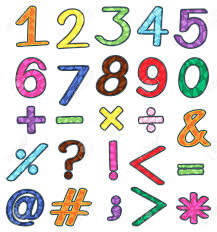Types of Numbers In Mathematics.Learn how numbers are distinguished based on the type and function they represent.The numbers can be of many types. There are four fundamental groupings that you should know. They are represented by letters and fulfill different functions. Next, we explain all the details.
Types of Numbers In Mathematics With Real Examples



1. Natural numbers
Natural numbers are used to count the elements of a set. They were the first to be created by humans. They are positive and are represented by the letter N. They can be: 1, 2, 3, etc.
2. Whole numbers
The negative natural numbers (-1, -2, -3 …) and the number 0 make up what are called integers. They are represented by the letter Z.
3. Fractional numbers
Fractional numbers are those that can be expressed as a fraction. It is the representation of one quantity divided by another.
4. Rational numbers
Whole numbers and fractional numbers are part of rational numbers. These are identified with the letter Q. They are those that can be represented as the quotient of two whole numbers.
5. Real numbers
All the types of numbers previously described make up the group of real numbers. They would all be real numbers.
Types of real numbers :
Irrational Numbers : are those that are not the result of a fraction of whole numbers. That is, they are the real numbers that are not rational. They all have the characteristic of having an infinite number of decimal places. Some examples are: square root of 2, the number e or the number pi, square root of 7 …
Complex Numbers ( C ) :are those that have the following characteristics
They own a real part
They have an imaginary part
Imaginary Numbers
Examples of complex numbers: C = [ 1 + i , 0 – i …]
Number Exercises :
Exercise 1 : Determine what type of numbers are the following:
1
4/2
1/3
-5
-5.2
√2
√ -1
i 2
number π (pi)
0
Solution;
1 → is a whole number
4/2 → 4/2 = 2 so it is a whole number
1/3 → is a rational real number
-5 → is an integer
-5,2 → is a rational real number
√2 → is an irrational real number
√ -1→ √ -1 = i so it is an imaginary number
i 2 = -1→so it is an integer
number π (pi) → is an irrational real number
0 → is an integer